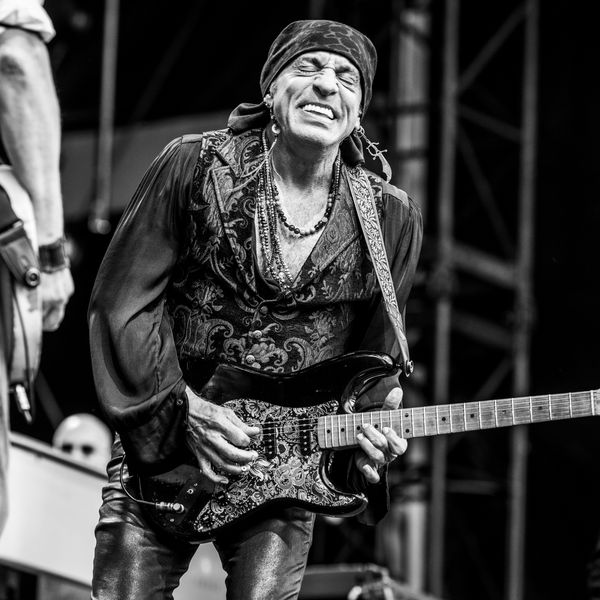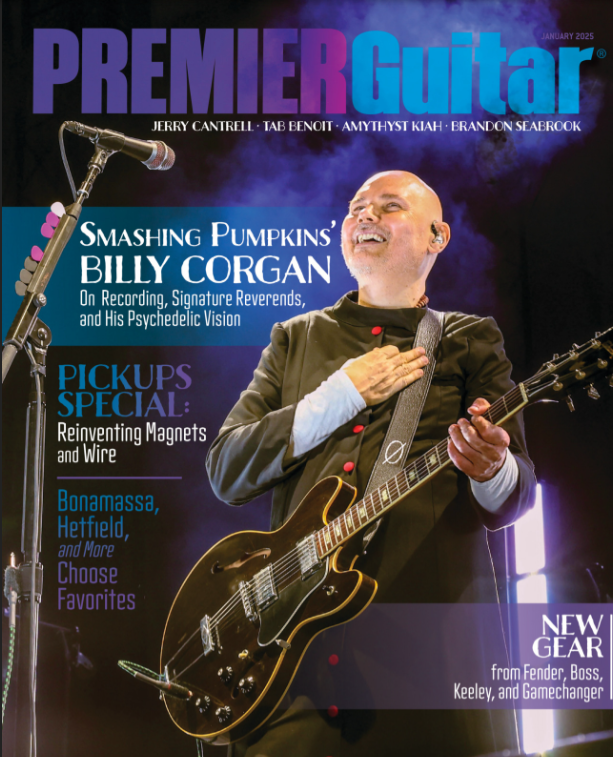When these metalheads couldn’t lasso the tones in their craniums, Nuñez took the DIY route and launched his own company to create gear for their boards and backline.
Another friend, another guitar … this time Jonathan Nuñez enlisted the help of Rig Rundown alumnus Sacha Dunble, who is the guitarist/vocalist for Intronaut and the main man behind Dunable Guitars. This is a Dunable Cyclops that has a Bill Lawrence L-500 in the bridge and a Dunable Baphomet in the neck.
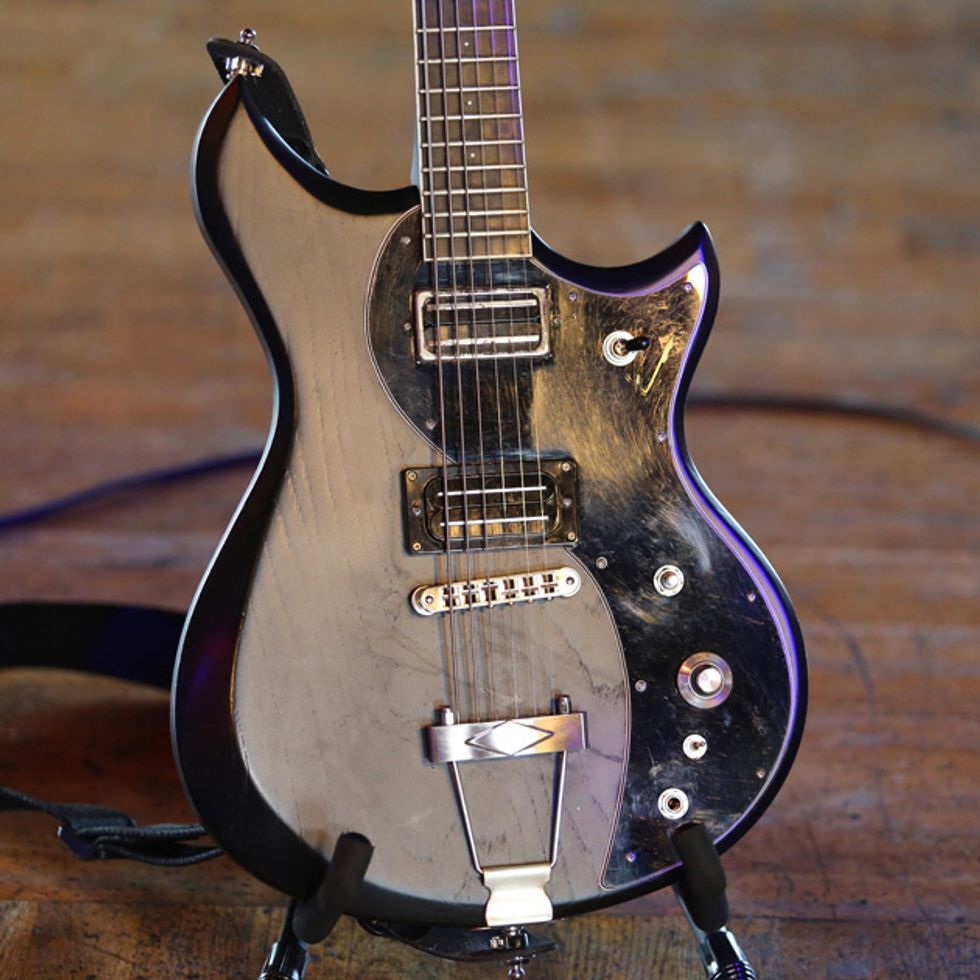
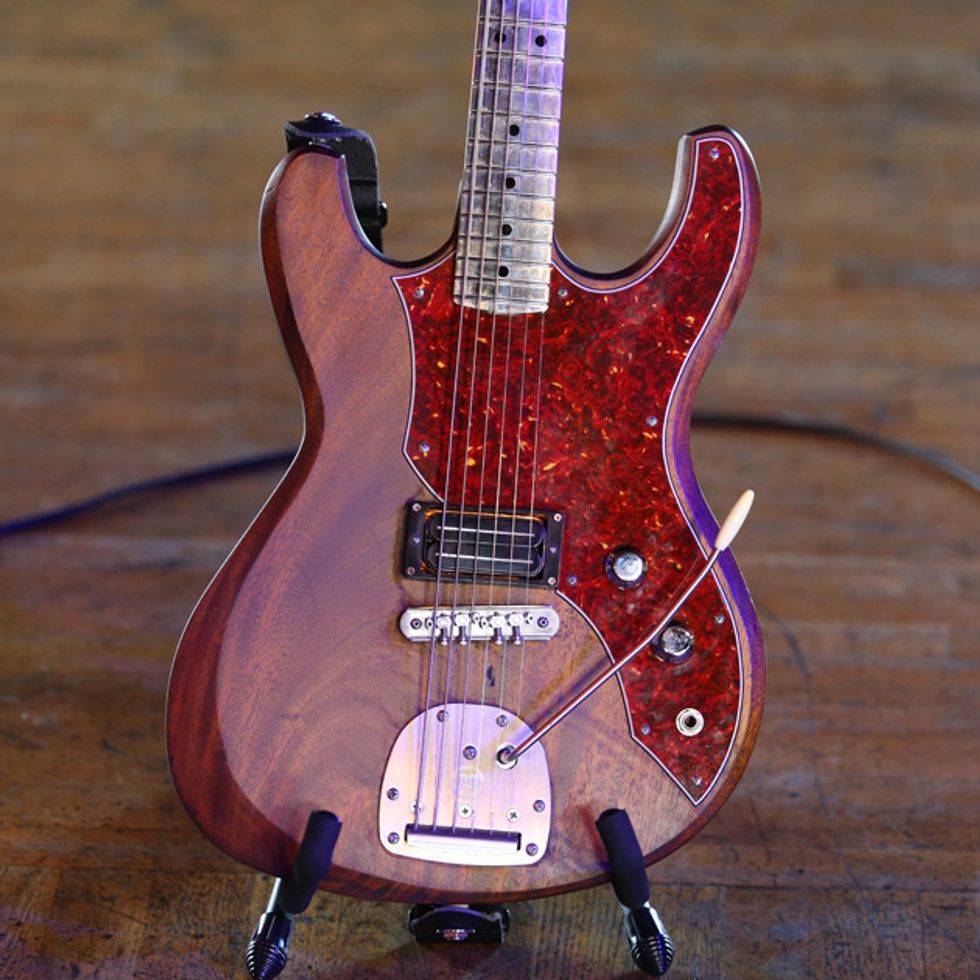
This beauty cherry picks aspects from Jonathan Nuñez’s favorite guitars. It all started with his love affair with his friend’s G&L F-100 while recording Admission. The F-100 he borrowed had a smooth floating trem arm that bends and wobbles all over the new record. “The trem was too much fun to play,” Nuñez jokes. “But once we finished the record, I realized, shit, I need to pull this off live.”
So, with the task of reverse engineering a guitar that is suited for Torche’s established roar and new tones flexed on Admission, Nuñez turned to some more friends. To keep in tradition with bandmate Steve Brooks’ and Torche’s steam-locomotive sound, he got a metal neck from Robot Graves Industries and put it with a curvy, mahogany, Mosrite-style body built by fellow South Florida rocker Joe Koontz (formerly of Against All Authority aka AAA). Nuñez has always been partial to the Bill Lawrence L-500 humbucker and thanks to his buddy (and Rig Rundown alumnus) Bobb Bruno of Best Coast turned him onto the Mastery OMV Vibrato, so those features made into this custom piece. All of his guitars take custom-gauge Dunlop strings (.070–.052–.046–.017–.013–.010). The band’s main tuning is an octave tuning that consists of A–A–D–G–B–E.

On the heels of their fifth album, 2019’s Admission, Torche hit the road for an extensive tour that started out having the harmonious doomers open for Baroness before venturing out for their own headlining sets. We fortunately caught the band on the latter run and guitarist Jonathan Nuñez (who also has served as the band’s bassist for 13 years and producer/engineer for Admission) spoke to PG’s Chris Kies about his and Steve Brooks’ slim setups that center around custom-made, metal-neck instruments and explains why he started Nuñez Amplification, which has become a big part of the band’s sonorous sonic imprint.
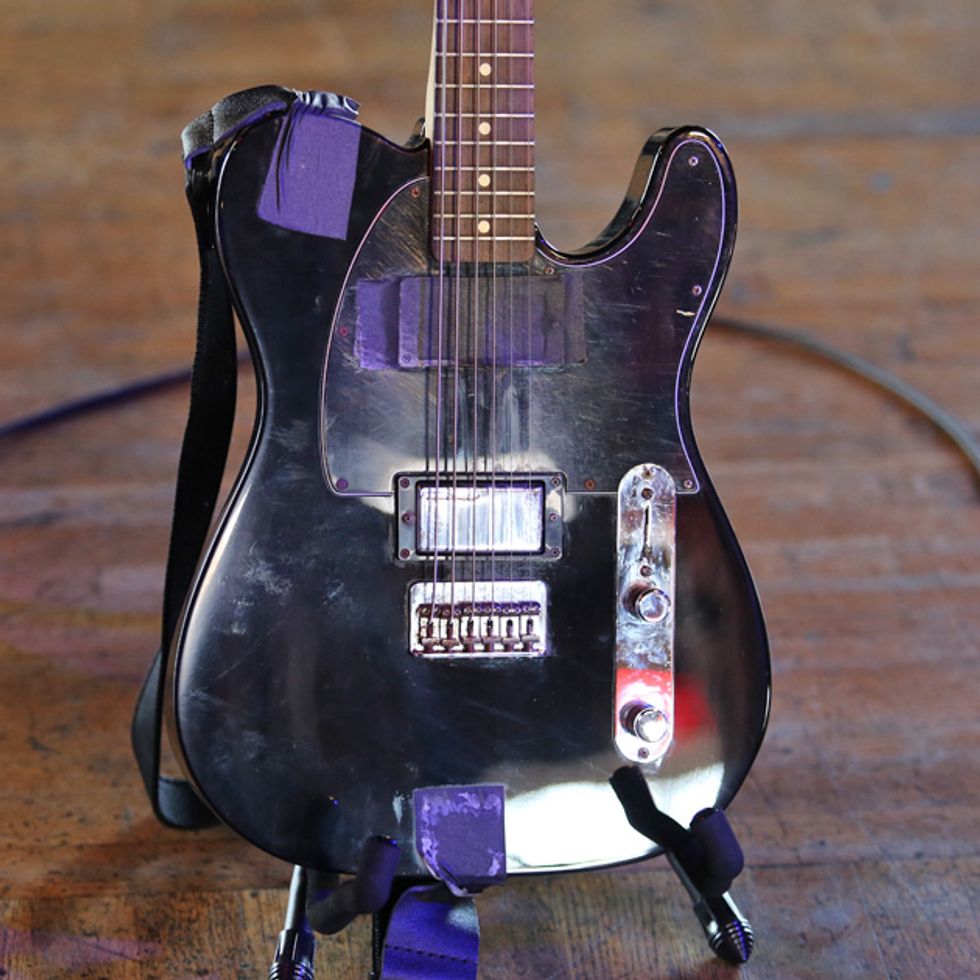
This Fender Telecaster HH Rosewood (with a Lace Nitro Hemi in the bridge) is the “bomb-note” guitar that sees stage time for “Infierno,” “What Was,” and “Annihilation Affair.” It takes the same .010–.070 strings and is set to the aforementioned octave tuning, but (as you’ll hear in the video) the 6th string is, well, not exactly ready for battle. It flops and allows Nuñez and Brooks to thwap the dead string producing a huge bomb-drop note. This was first discovered when Brooks was recording with his first band Floor and someone busted a string mid song, causing a lightning-strike noise.
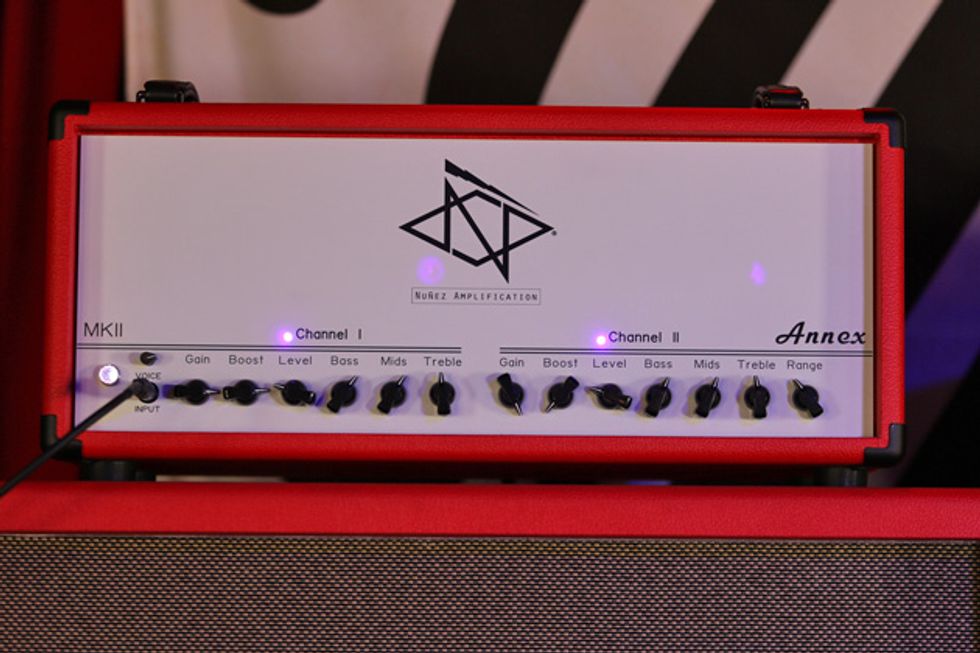
In 2017, Nuñez switched from bass to guitar and missed the blowing breeze that his Ampeg 8x10 stack stirred up each night. Feeling a void after trying countless amps, Nuñez got Overtone Works’ Gary Phillips on the horn and the first idea that came to fruition was the Annex Bass Channel pedal. After that, the tone-chasing duo set their sights on an Annex guitar amp. The way Nuñez describes this 130-watt behemoth is this: “a handwired, discrete class A/B, quad-voiced, dual-channel, all-tube head.” Each channel is independent, so you’re essentially getting two amps in one box. Channel one has symmetrical clipping, while channel two has asymmetrical clipping. This growler is brought to life thanks to a quartet of EL34s. The one shown above is a MkII variant.
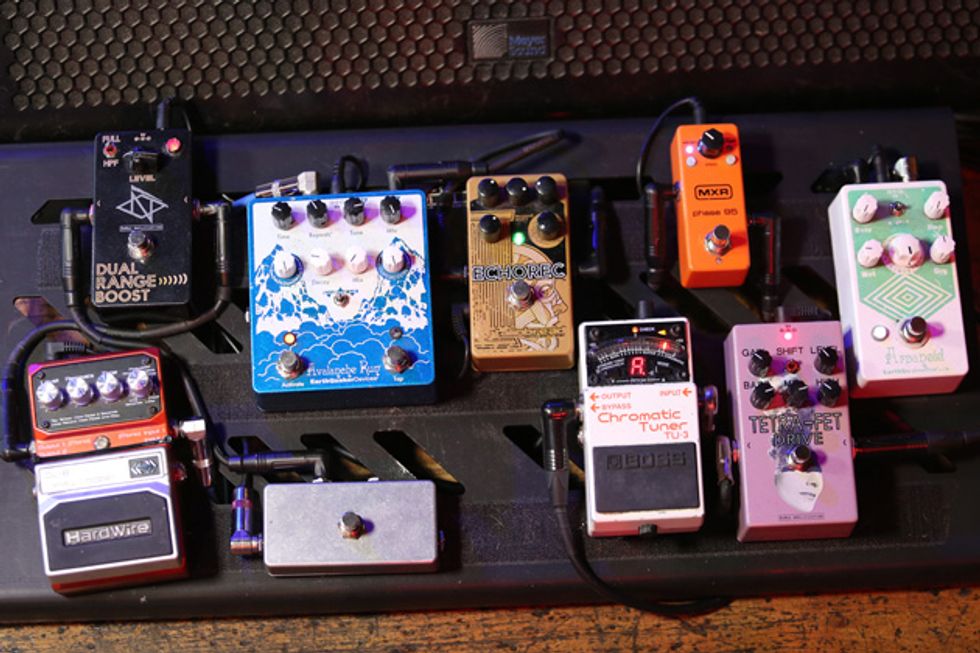
Jonathan Nuñez’s pedal playground is host to a pair of EarthQuaker Devices stomps—Arpanoid and Avalanche Run—a Nuñez Dual Range Boost and Nuñez Tetra-Fet Drive (with custom Admission artwork), an MXR Phase 95, Catalinbread Echorec, and DigiTech HardWire DL-8 Delay/Looper. A Boss TU-3 keeps everything in tune.
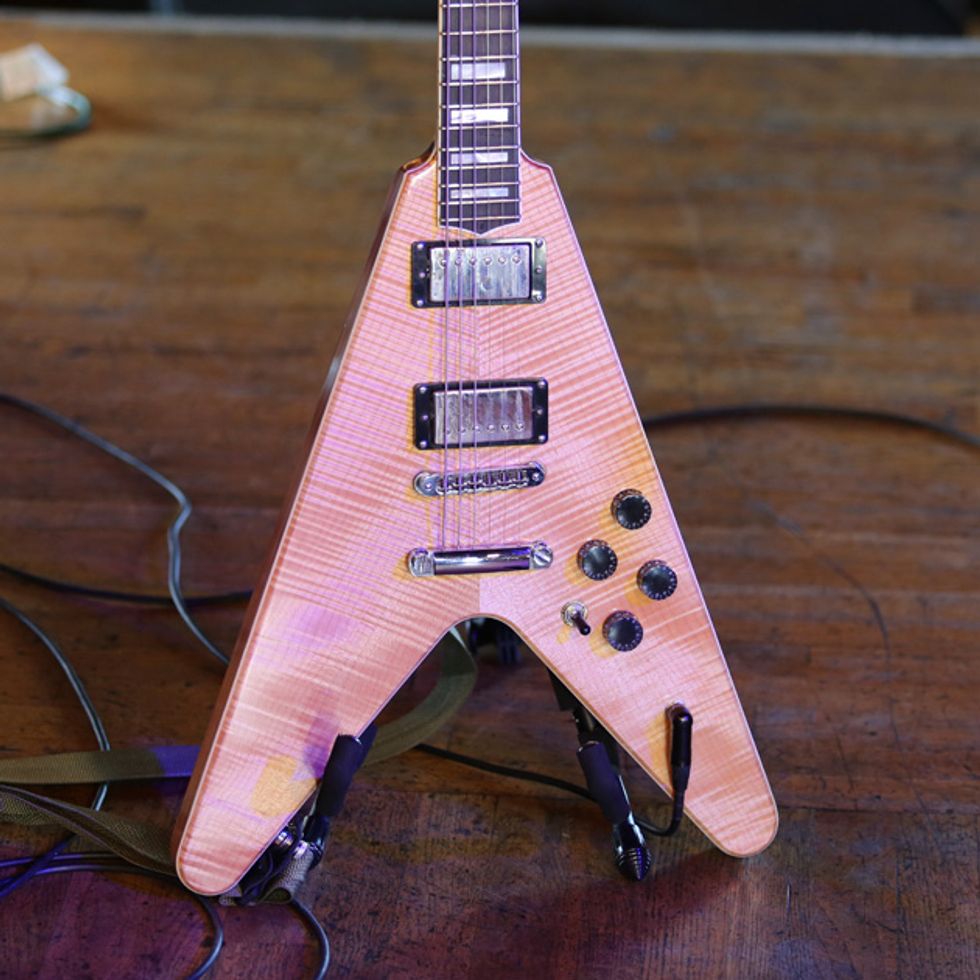
Guitarist/singer Steve Brooks first got his hands around a JML Custom Guitar when Jay Lewis handbuilt a neck-through, SG-style ripper that was cleverly coined the SB. Steve always wanted a V so he commissioned the builder to create an oversized, neck-through version that’s approximately 1.25 the size of a standard model.
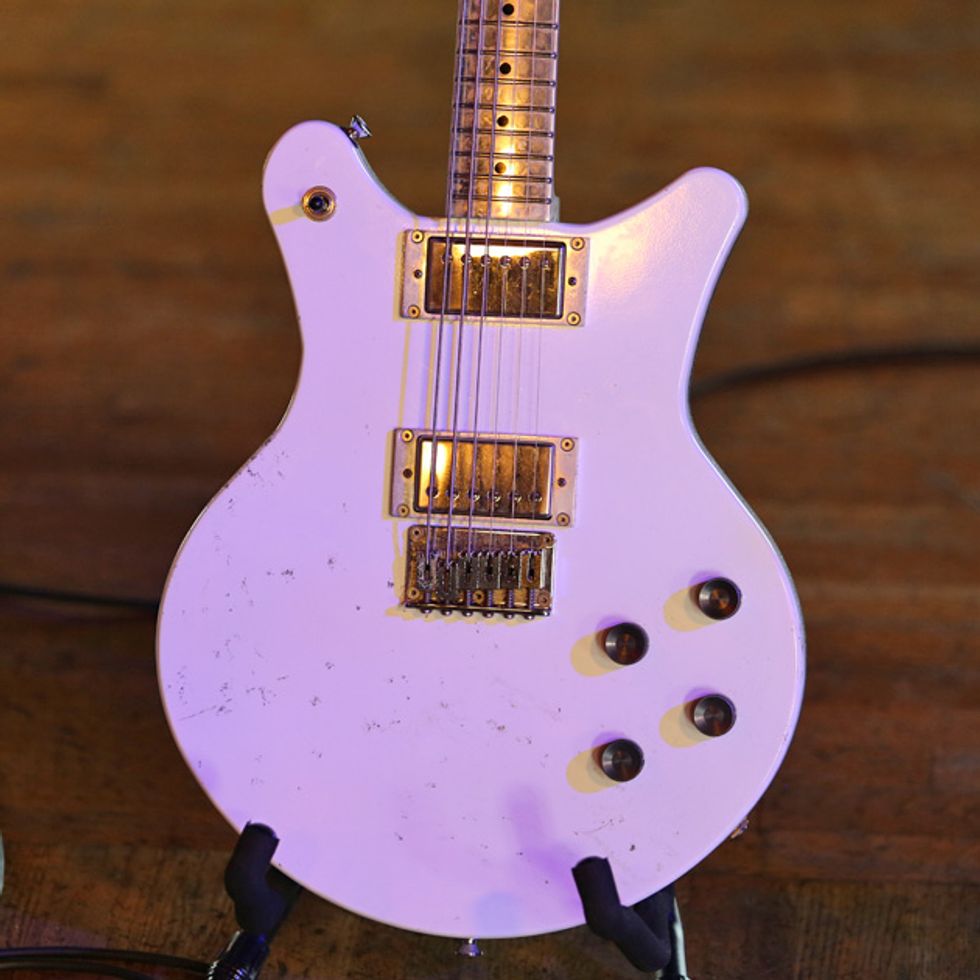
If you’re a loyal Torche fan, you’ll recognize this Electrical Guitar Copmany Standard as Steve Brooks’ longtime main ride that still sees plenty of stage time when the band goes through older material.

This Nuñez Annex MkII is from one of the first batches and been Brooks’ amp of choice since working on Admission. There are minimal differences between this head and the newer one Nuñez plugs into, mainly cosmetics (the company now offers more colors to not pigeonholed themselves into a specific musical genre or player), upgraded circuitry components, and an fine-tuned FX loop, but Brooks still plugs into the front of the amp.
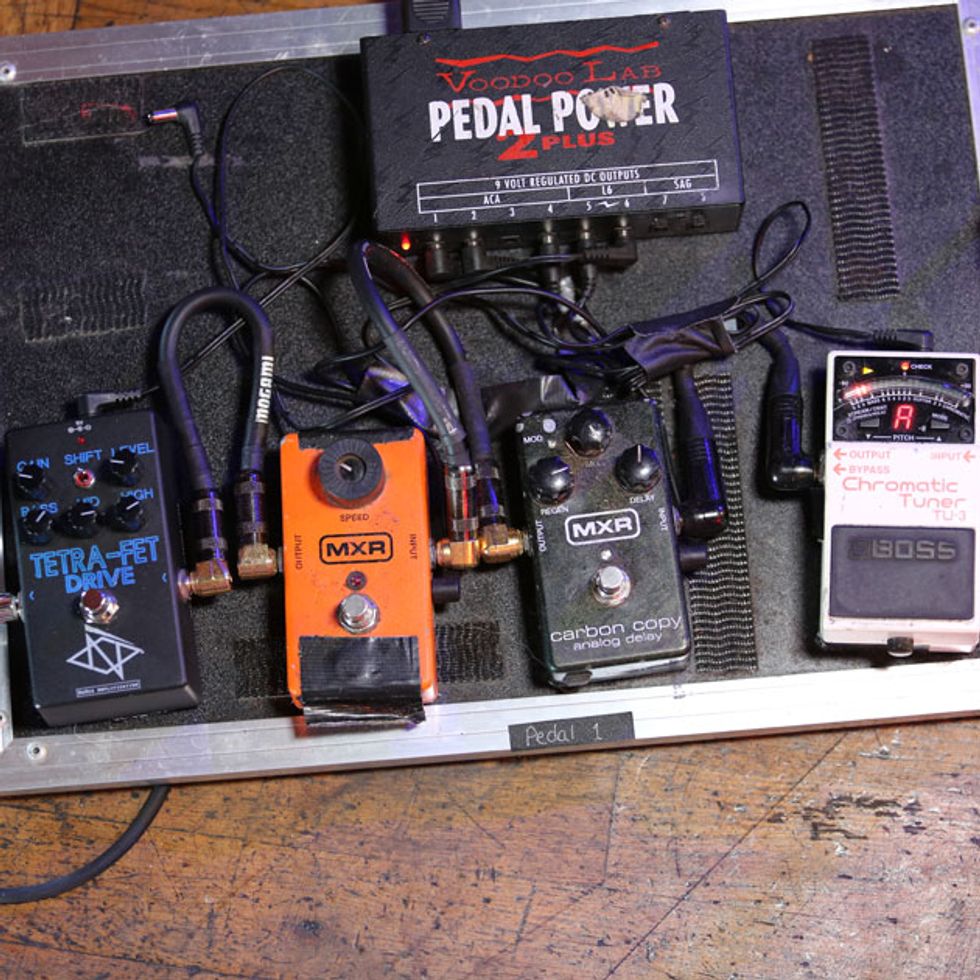
Steve Brooks is more of a rhythm, meat-and-potatoes player and keeps an airport-friendly board. He has an MXR Carbon Copy, MXR Phase 90, and a Nuñez Tetra-Fet Drive. A Boss TU-3 keeps everything in check and a Voodoo Lab Pedal Power 2 Plus brings the noisemakers to life.
Click below to listen wherever you get your podcasts:
 |  |
 |  |
D'Addario Pro-Winder:https://www.daddario.com/ProWinderRR
Explore two standouts to take your Fingerstyle guitar playing to the next level! PG contributor Tom Butwin demos the Walden G270RCE and the Riversong Stylist DLX, showcasing their unique features and sound.
An all-analog ’60s-inspired tremolo marries harmonic and optical circuits that can be used independently or blended to generate phasey, throbbing magic.
Spans practical, convincing vintage trem tones and the utterly weird. Hefty build quality.
Big footprint. Can’t switch order of effects.
$299
Jackson Audio Silvertone Twin Trem
jackson.audio
Almost any effect can be used subliminally or to extremes. But tremolo is a little extra special when employed at its weirder limits. Unlike reverb or delay, for instance, which approximate phenomena heard in the natural world, tremolo from anything other than an amp or pedal tends to occur in the realm of altered states—suggesting the sexy, subterranean, and dreamy. Such moods can be conjured with any single tremolo. Put two together, though, and the simply sensual can be surreal. Modify this equation by mating two distinctly different tremolo types, and the possible sound pictures increase manifold.
The all-analog, U.S.-built Jackson Audio Silvertone Twin Trem accomplishes this by combining a syrupy harmonic tremolo—the likes of which you’d hear from an early-1960s brown-panel Fender amp—and an optical tremolo like that in a Silvertone 1484 Twin Twelve amp or black-panel Fender. Both effects can be used independently, but it’s when the two are blended that the Twin Trem shines.
Doppelganger Effect
The Twin Trem’s optical and harmonic circuits are obviously not identical twins, but each is operated via its own 3-knob array consisting of speed, depth, and a smaller volume knob that will boost or cut the output of the individual circuit. Both tremolo types modulate at speeds slower than what you hear in amplifier equivalents. I don’t have a Silvertone Twin Twelve tremolo on hand for comparison. But the slowest speed from a mid-1960s Fender optical tremolo matched the rate of the Twin Trem’s optical circuit at about the midpoint of its range. At its slowest, the optical side will cycle through minimum and maximum volume in just a little under a full second, which feels molasses-slow, stretching and enhancing the ramping effect. Maximum speeds on the Twin Trem are closer to the maximum on the old Fender. But that’s still a pretty rapid modulation rate and the Twin Trem’s range-y depth controls make fast modulations sound extra alien.
If you’re sensitive to such things, the dedicated volume controls are great for overcoming the perceived volume drop that goes with any tremolo. There’s much more gain available than what you need for that purpose, and slathering on the volume gives the pulses a burly quality that’s tough but can obscure some nuance. The ability to create disparate volumes for each circuit means you can slightly foreground one tremolo type or the other, opening up an even wider tone palette and highlighting unique interrelationships between modulations.
Double Shots Make Dizzy Daze
The Twin Trem’s optical tremolo side (if you open up the back you can watch the pulsing diode that activates the opto-resistor) exhibits the throbbing tendencies one associates with black-panel Fender amplifiers. In fact, the Twin Trem sounds uncannily like the old Vibrolux I used for this test, but with more speed, range, and intensity. On its own, it’s a convincing stand-in for a 1960s Fender, Gibson, or Silvertone circuit.
One of the coolest things about the harmonic tremolo is how it often doesn’t sound like tremolo at all. In a harmonic tremolo circuit, high and low-frequency bands are split and volume-attenuated out of phase from each other, creating a bubblegum elasticity in the modulations. At slow speeds the harmonic tremolo’s phasey attributes take center stage (clip 1). And though the modulation texture is less swirling than what a simple phaser produces, the more vowel-like pulses lend a sleepy, mysterious aura to the modulation.
Though I did not use the pedal in stereo, I did utilize the effects loop, inserting a delay between the harmonic and optical tremolo, creating a little extra wash in the harmonic tremolo sweeps (clip 2). You can go crazy with possibilities here: How about inserting a multiple-tape-head-style delay for maximum syncopated mayhem? But the most traditional application for the effects loop is to simulate the reverb-into-tremolo order found in many mid-1960s amps. Again, it’s a great option when you need ’60s reverb/tremolo combo amp vibes and there’s no such animal around.Audio clip 2, which showcases the Twin Trem’s effects loop, also captures the two tremolos working together. And even at this fast-twitching speed you can hear the phaser-like wash softening the front end of the harder optical pulses that are situated downstream. Some dual-trem settings can produce chaos. But the best ones are thick, eerie, and propulsive in ways that can completely transform a song’s ambience.
The Verdict
The Twin Trem is just short of 300 bucks, and it’s easy to rationalize such a significant expense when you consider that you get two distinct tremolo sounds that you can mix, match, and switch between very readily. Maximizing the investment probably requires a little extra thirst for the unusual. Not all combined settings are money. Some rhythmic syncopations will drive you batty, and without the benefit of digital control you can disappear down little rabbit holes trying to find an elusive, perfect subdivision between modulation tempos or replicating a texture you found the previous week. It’s also too bad that you can't switch the order of the circuits. These are very minor traps, however. In general, the Twin Trem is forgiving and easy to use. And if you get in a meditative place with the pedal, and let it do the driving from time to time, the riffs will practically write themselves.
Bonnaroo announces its 2025 lineup featuring Luke Combs, Hozier, Queens of the Stone Age, Avril Lavigne, and more.
This year features headline performances from Luke Combs on Thursday, Tyler, The Creator on Friday, Olivia Rodrigo on Saturday, and Hozier on Sunday. Further highlights include John Summit, Dom Dolla, Avril Lavigne, Glass Animals, Vampire Weekend, Justice, Queens of the Stone Age, and the first-ever Roo Residency with King Gizzard & the Lizard Wizard performing three sets over three days. In addition, Remi Wolf will lead the “Insanely Fire 1970’s Pool Party” 2025 SuperJam, Bonnaroo’s legendary tradition. The complete Bonnaroo 2025 lineup is below.
Bonnaroo tickets go on sale tomorrow, Thursday, January 9 beginning at 10 am (CT) exclusively via bonnaroo.com. Guaranteed lowest-priced tickets are available during the first hour of sales, from 10 am - 11 am (CT). 2025 ticket options include 4-Day General Admission, 4-Day GA+, 4-Day VIP, and 4-Day Platinum, along with a variety of camping and parking options starting at just $25 down with a payment plan.
The 2025 festival will offer some exciting new features for Bonnaroovians, including the “Closer” RV and Primitive Camping accommodations that guarantee closer proximity to Centeroo, regardless of which day fans choose to enter The Farm. Among this year’s most exciting additions will be The Infinity Stage, a brand-new, one-of-a-kind venue – presented in partnership with Polygon Live – boasting spatial sound, synchronized lights, and an unprecedented three-dome, open-air design to create the world’s largest, most immersive, 360° live music experience.
Bonnaroo also offers upgraded ticket types for those who prefer an elevated experience. GA+ tickets include unlimited access to the Centeroo GA+ Lounge, with relaxed seating, dedicated food for purchase, air-conditioned restrooms, and hospitality staff to assist with all festival needs; a private bar with drinks for purchase plus complimentary soft drinks; complimentary water refill station; a dedicated premium entrance lane at both gates into Centeroo, and more. VIP and Platinum guests will enjoy the same perks plus additional exclusive upgrades, including dedicated close-in and on-field viewing areas; unlimited access to VIP and Platinum Lounges; express lanes at the Festival Store, commemorative festival gifts, and so much more. To learn more about VIP and Platinum, please seehttp://www.bonnaroo.com/tickets.
A wide range of Camping & Parking options will be available in Outeroo including Primitive Car Camping, Glamping, RVs, Backstage Camping, Accessible Camping, Groop Camping, Community Camping, and more. Premium Outeroo Camping Accommodations include pre-pitched Souvenir Tents, cool and comfortable Darkroom Tents, weatherproof Luxury Bell Tents, and spacious 2-person Wood Frame Safari Tents for the ultimate Bonnaroo camping experience. Cosmic Nomads On-Site Daily Parking passes will be available for ticketholders not camping. For details on all accommodation options, please visitwww.bonnaroo.com/accommodations.
Complete Lineup
THURSDAY, JUNE 12
Luke Combs
Dom Dolla
Sammy Virji
Marcus King
Green Velvet
2hollis
Insane Clown Posse
Joey Valence & Brae
Daniel Donato's Cosmic Country
Wilderado
Max Styler
Azzecca
The Lemon Twigs
Wisp
Sofia Isella
Kitchen Dwellers
Dogs In A Pile
Die Spitz
Hey, Nothing
The Droptines
FRIDAY, JUNE 13
Tyler, the Creator
John Summit
Glass Animals
Tipper
Goose
The Red Clay Strays
Rainbow Kitten Surprise
Megadeth
Wallows
Foster the People
Slightly Stoopid
Flipturn
Of the Trees
JPEGMAFIA
Marina
Tape B
MJ Lenderman
BossMan Dlow
INZO
Levity
Mannequin Pussy
Leon Thomas
Cults
Aly & AJ
Matt Champion
Detox Unit
Rachel Chinouriri
Eater
Ginger Root
Bebe Stockwell
Effin
SATURDAY, JUNE 14
Olivia Rodrigo
Avril Lavigne
Justice
Nelly
GloRilla
Mt. Joy
RL Grime
Beabadoobee
Tyla
Jessie Murph
Modest Mouse
Gorgon City
Flatland Cavalry
Hot Mulligan
Action Bronson
Crankdat
Dope Lemon
Gigi Perez
Wave to Earth
Claptone
Jade Cicada
What So Not
Daði Freyr
Ziggy Alberts
ROSSY
Destroy Boys
The Stews
Thee Sinseers & The Altons
AHEE
SUNDAY, JUNE 15
Hozier
Vampire Weekend
Queens of the Stone Age
LSZEE
Remi Wolf
Raye
Royel Otis
Dispatch
Role Model
Barry Can't Swim
Treaty Oak Revival
Big Gigantic
Jack's Mannequin
ATLiens
Bilmuri
Saint Motel
James Arthur
Alex Warren
Zingara
Natasha Bedingfield
Alexandra Kay
Goldie Boutilier
Grace Bowers & The Hodge Podge
GorillaT
YDG
SPECIAL PERFORMANCES
King Gizzard & the Lizard Wizard Roo Residency: 3 Sets, 3 Days (Friday, Saturday and Sunday)
Remi Wolf’s Insanely Fire 1970’s Pool Party Superjam (Saturday)
The fast-rising Okies use solid-state amp heads, baritone guitars, and a bit of Peavey magic to bring their nightmare-rock to life.
Oklahoma City sludge rockers Chat Pile have had a busy few years. Their 2022 LP, God’s Country, broke them internationally, and their critically acclaimed 2024 follow-up, Cool World, solidified them as one of the most exciting heavy bands of the moment. We spoke with bassist Stin and guitarist Luther Manhole about the record for our November 2024 issue.
Now, we bring you the band’s first official Rig Rundown, filmed ahead of their show at The End in Nashville last fall. Tune in to see how Stin and Luther conjure the band’s brutal soundstorms on the road.
Brought to you by D’Addario.
Bari Blast
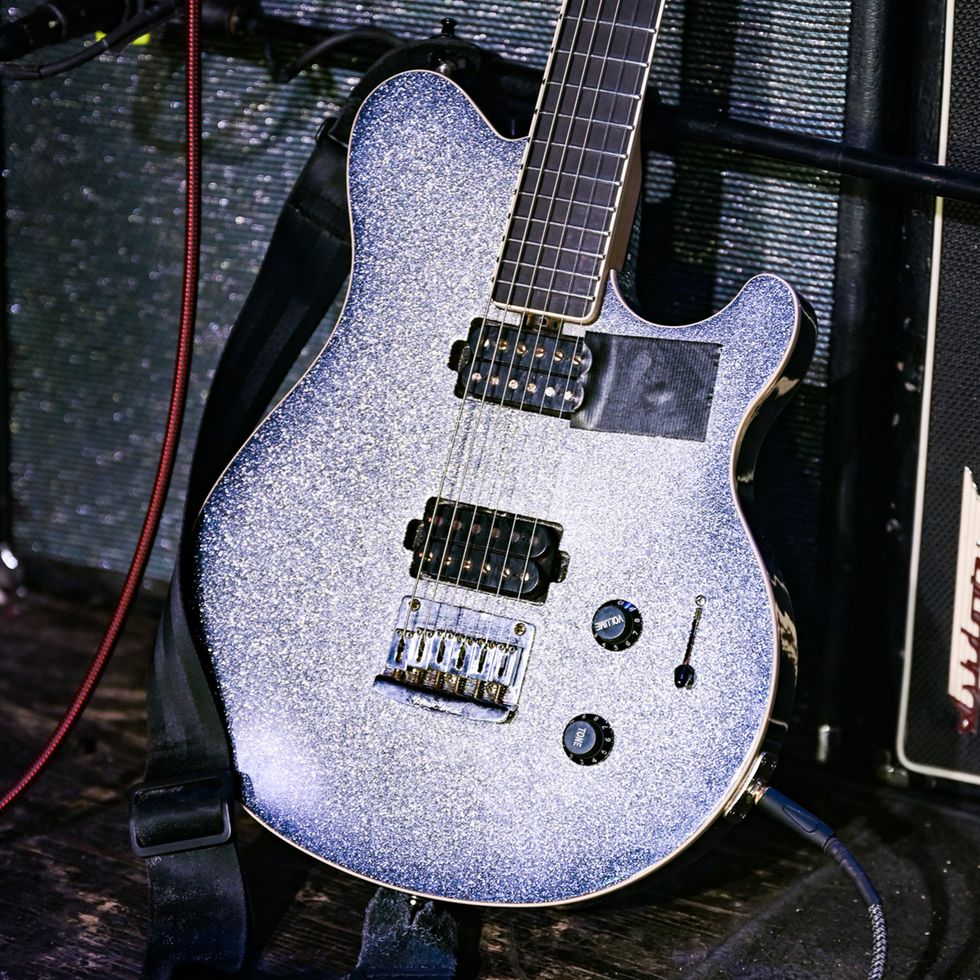
Manhole’s main machine is this baritone 6-string, an Ernie Ball Music Man BFR Axis Super Sport, finished in “starry night.” Luther took a tip from tourmate and Agriculture guitarist Richard Chowenhill and slapped some tape over his neck pickup near the first string to prevent it from catching on the edge of the humbucker. It’s tuned to drop A, with Ernie Ball Mammoth Slinky strings.
Quite the Quilter
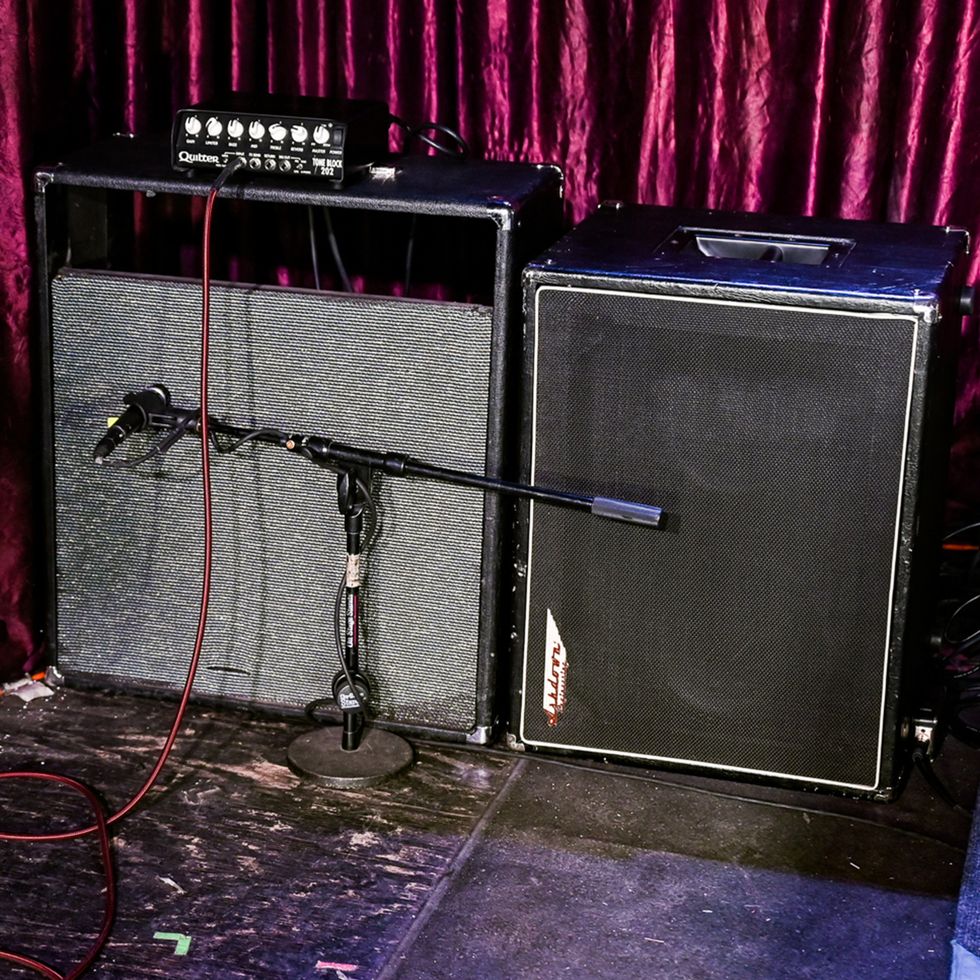
Back at home, Luther and Stin lean on big vintage amps, but on the road, Luther brings out this Quilter Tone Block 202, which is plugged into an Ampeg VT-40 combo amp that’s been gutted to run just as a 4x10 cabinet. Luther digs the icier, cutting tone from the 10″ speakers.
Luther Manhole's Board
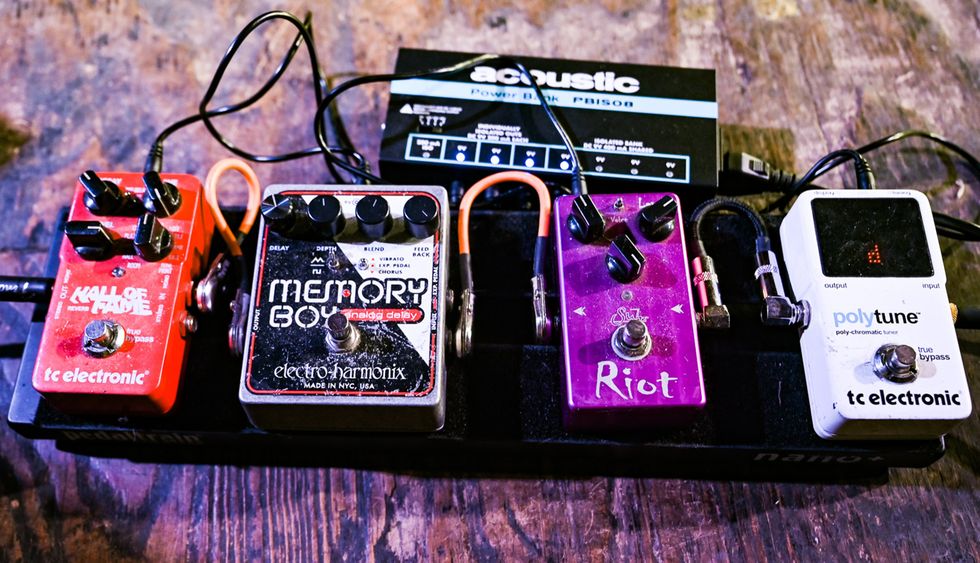
Manhole’s board is minimalist: All he needs is a TC Electronic PolyTune, a Suhr Riot for dirt, an Electro-Harmonix Memory Boy (which is set for a wobbly chorus effect), and a TC Electronic Hall of Fame for reverb—pedals he’s used for over a decade. An Acoustic PBIS08 supplies the quartet with power.
Peavey Power
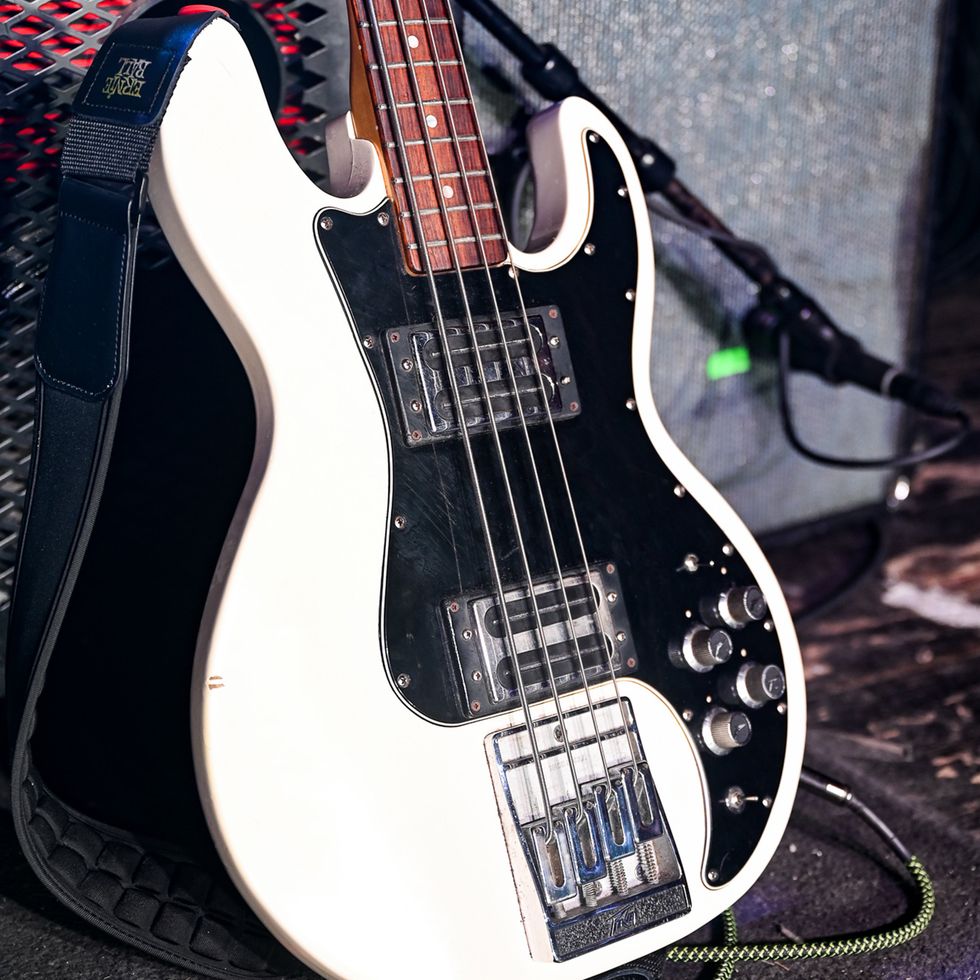
Around 2007, Stin went on a hunt around Oklahoma music shops for a Peavey T-40. He finally found one—in a total “Wayne’s World moment”—that belonged to a country singer who had passed away. Since the band’s formation, this “hot and clangy” white T-40 has been Stin’s tool for crafting Chat Pile’s elephantine, bottom-heavy sound. He uses the 5-string Ernie Ball Slinky Cobalts (.060–.125), omitting the .040 string, and plucks with orange Ernie Ball Everlast .73 mm picks for strong, percussive attack.
Building Blocks
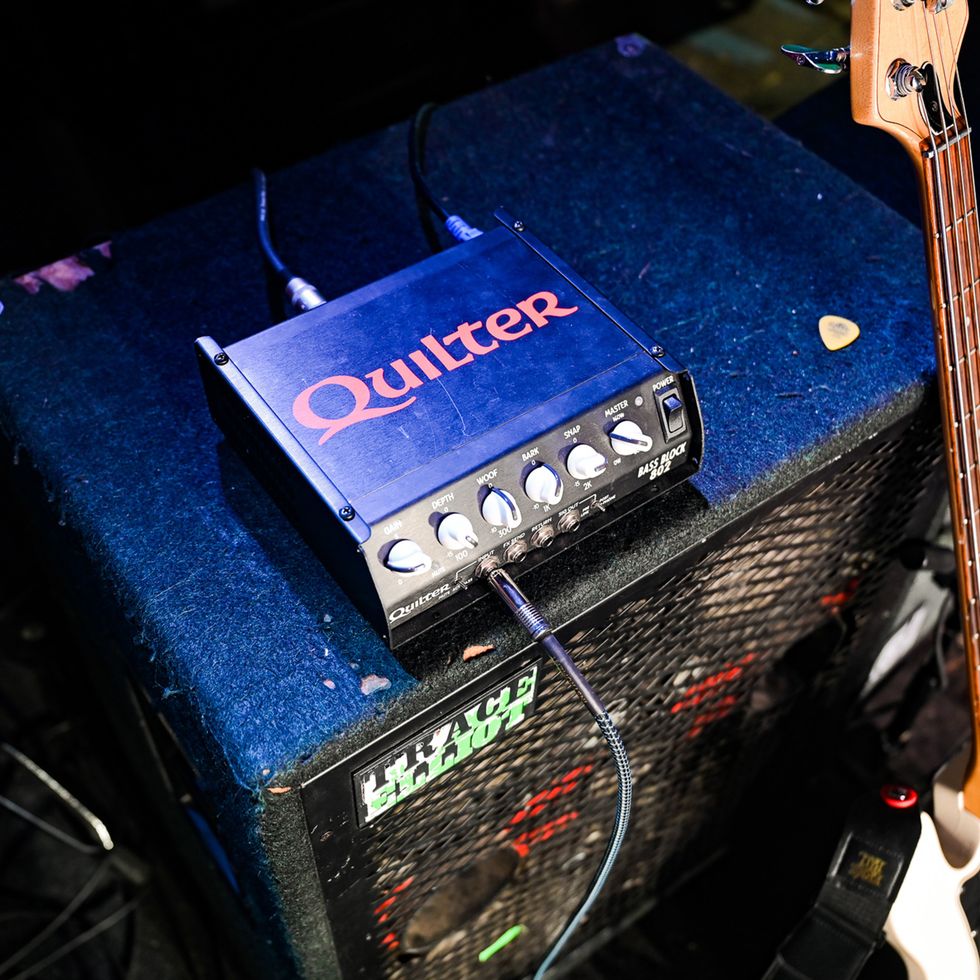
Stin’s signal runs to this Quilter Bass Block 802, which blasts through a Trace Elliot 4x10 redline cab with horns—the cab that’s been used on every Chat Pile recording to date.
Stin's Board

Stin probably thinks Manhole’s board is excessive. He packs just his Boss TU-3 and a Tronographic Rusty Box, each with their own individual power supply plugged into a power bar that’s fixed to the board.
